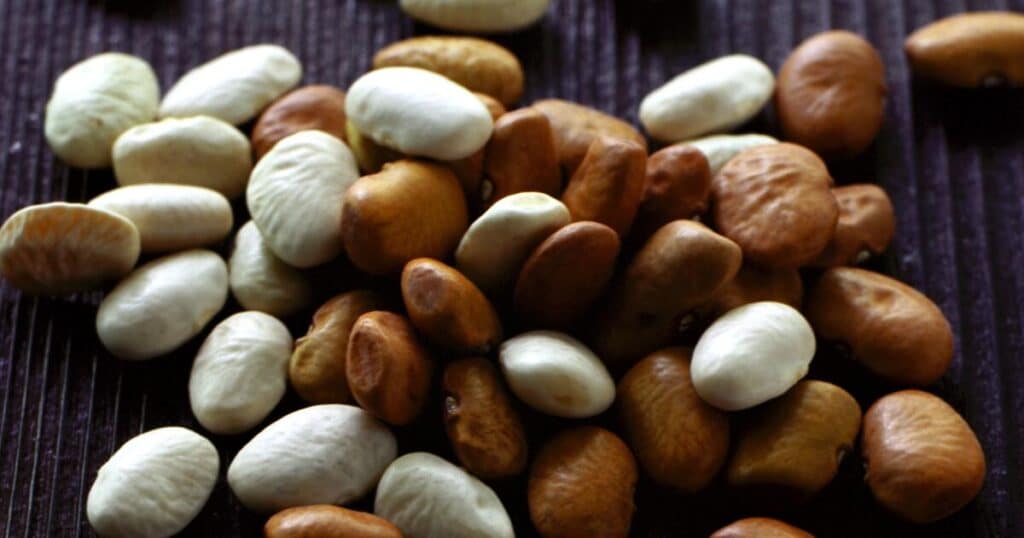Your Local SEO and Digital Marketing Experts in San Diego County
Thanksgiving, our national harvest celebration, is a good day to remember our collective food history, and an even better one to taste it. Teparies are native to the Sonoran Desert in the Southwest U.S. and Mexico, where they were first domesticated at least 4,000 years ago. Twenty-two Indigenous cultures, as well as Mexicans and Anglos, have grown them. Now they’re a crop in low-water, high-heat regions around the world.
These small, variegated and resilient bush beans, dried, are a staple for Tohono O’odham, Akimel O’odham and Pima Indians in Arizona and New Mexico. In one Tohono O’odham story, trickster Coyote flings white teparies into the sky to make the Milky Way. Lakota Sioux chef Sean Sherman recounts that when the Dine — the Navajo — were forced from their homes on the brutal Long Walk of 1864, Indigenous seed savers hid teparies in their clothing for sustenance and tradition.
Native cultivation never stopped, but the fact that teparies are available in grocery stores now (you can order them online too) is largely thanks to nonprofit heirloom seed savers, “land back” efforts that reconnect Native American farmers with their homelands and funding help for climate-change-friendly agriculture.
Heat-, drought- and salt-tolerant, teparies thrive in the alkaline desert soil in temperatures that reach more than 125 degrees. They thrive with seasonal monsoon rains, flowering and producing pods when other beans fail. They require one-fifth of the water needed to grow common beans (a.k.a. pinto and kidney beans) and one-fourth the water required for alfalfa to feed livestock — teparies are human food and forage for animals.
Teparies come in a lot of varieties and colors, but white, brown and black are the most common. White teparies are relatively mild, closer in flavor to cannellini beans; the brown and black ones have an earthier, more robust taste. They all keep their shape when you cook them.
Nutty-tasting, satisfying and rich, teparies are packages of powerful nutrients. Higher in protein than most common beans (a.k.a. pintos or kidneys), they’re a great source of calcium, niacin, iron, zinc, magnesium, phosphorous, potassium and fiber, and they’re low on the glycemic index, which means they’re digested slowly and they can help control diabetes, obesity and heart disease.
Tepary beans belong in everyone’s kitchen; they have a lot to teach us about eating well and living lightly on a hotter, drier planet. Serve them at your Thanksgiving feast; they’re something to be thankful for.
Sonoran Tepary Dip
Makes about 2 1/2 cups
This simple dip makes a wonderful appetizer. Use any color tepary you like.
1 cup tepary beans
2 cloves garlic, chopped
1 small jalapeño or Anaheim pepper, seeded and diced
¼ cup fresh lime juice
1 teaspoon ground cumin
¼ teaspoon chile powder, or more to taste
Coarse salt and freshly ground pepper, to taste
Small yellow onion, chopped
1 cup chopped cilantro leaves
2 to 3 tablespoons extra virgin olive oil
Pine nuts for garnish
Cook the beans (one cup of dried beans yields two cups cooked). Tepary beans take longer to cook than most dried beans. Soak them, with enough water to cover by 4 inches for at least 12 hours and up to 24 hours. Drain, rinse and return to the pot with water to cover by 4 inches. Bring to a boil, reduce heat, cover and simmer until tender, 2 to 4 hours.
In a large bowl, stir together the cooked beans, garlic, pepper, lime juice, cumin, chile powder, salt and pepper. Using a potato masher or the back of a fork, smash the ingredients until you have a rough paste; add water if necessary. Stir in the onion and cilantro. Transfer to a serving bowl and garnish with the oil and pine nuts. Store leftovers in a covered container for up to three days.
Beth Dooley’s latest cookbook, written with ethnobotanist Gary Paul Nabhan, is “Chile, Clove and Cardamom: A Gastronomic Journey into the Fragrances and Flavors of the Desert.”

